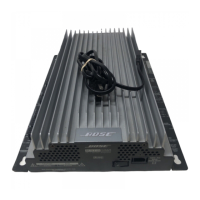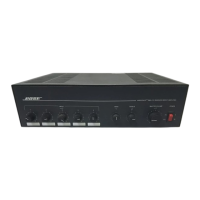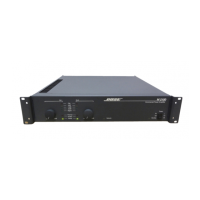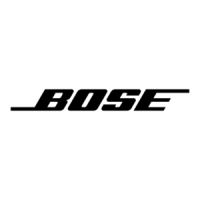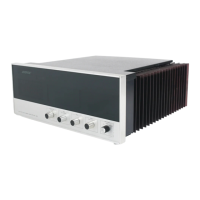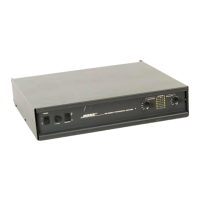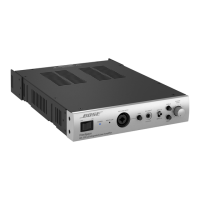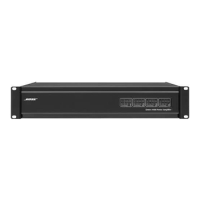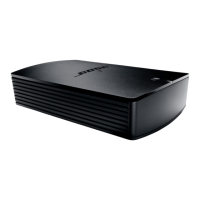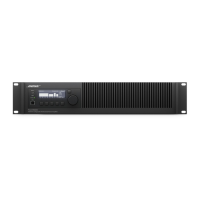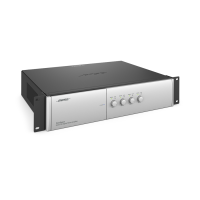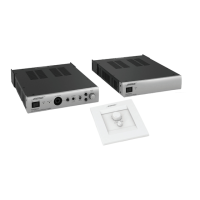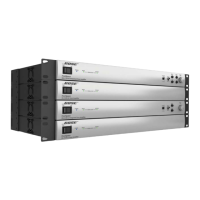15
THEORY OF OPERATION
Digital Signal Processor (DSP) PCB (continued)
Power-Up Sequence (continued)
The microcontroller proceeds to:
• Set up its I/O ports.
• Print out a “reset” message on the TTY output.
• Program the codec and verify that it responds.
• Retrieve system variables from nonvolatile memory and print out the “power_cycle” and
“eq” variables.
• Boot the DSPs, and wait for them to respond.
• Pass over system variables to the DSPs.
• Print out any appropriate error messages.
• Unmutes the power amplifiers, then unmutes the DSPs.
At this point, normal signal processing commences. It should take no more than 1.5 seconds
from the time power is applied until the time audio appears at the speaker outputs.
Power-Down Sequence
Upon receiving the “off” command from the head-end, the microcontroller;
• Mutes the DSPs.
• Mutes the power amplifiers.
• Powers down the codec and the DSPs.
• Stores system variables in EEPROM.
And then monitors the voltage level at the turn-on input. When it sees a low to high transition, it
resets itself as if the power had just come on.
Detailed Theory of Operation (see schematic diagram SD256431)
Digital Signal Processor (DSP) Board, Sheet 1 of 4
Sheet 1 of 4 shows the analog input buffers, codec’s power supply, analog output buffers and
some “glue logic” around the codec. The analog input buffers consist of op-amp U105 [B/C6] and
associated components. The ratio of R102 (and R107) to R100 sets the gain; -6 dB from J9 to
the input of the codec. The dual-diodes D100 [D7], D102 [C7], and D104 [B7] are there to clamp
ESD discharges into J9. The filter capacitors C100 [D7], C105 [C7], etc., are present to filter off
RF picked up by the input cable.
The output signal from the buffer is ground referenced, but the codec’s analog inputs are biased
at about 2.3V. C104 [C6] is required to AC-couple the signal from the buffer into the codec. R103
and D103 are present to prevent transients from the op-amp (±12V rails) from overdriving and
perhaps damaging the codec (5V rail). R104 and C102 [C6] are an EMI filter to prevent any RF
leaking from the codec from getting outside the metal EMI shield. The codec is located under the
shield, while the input buffer is not.
